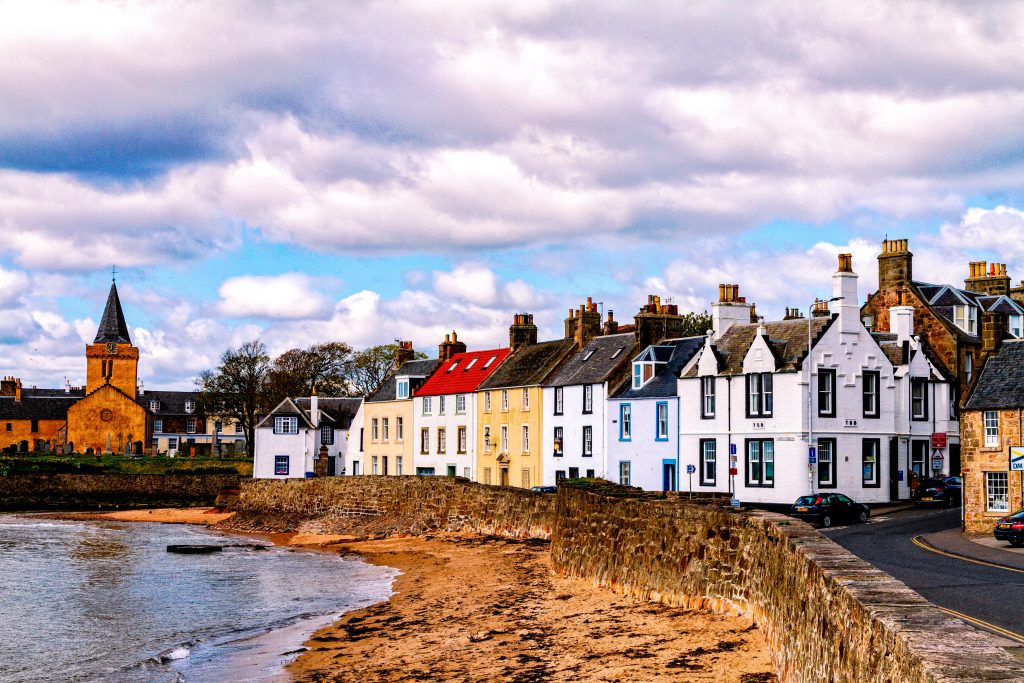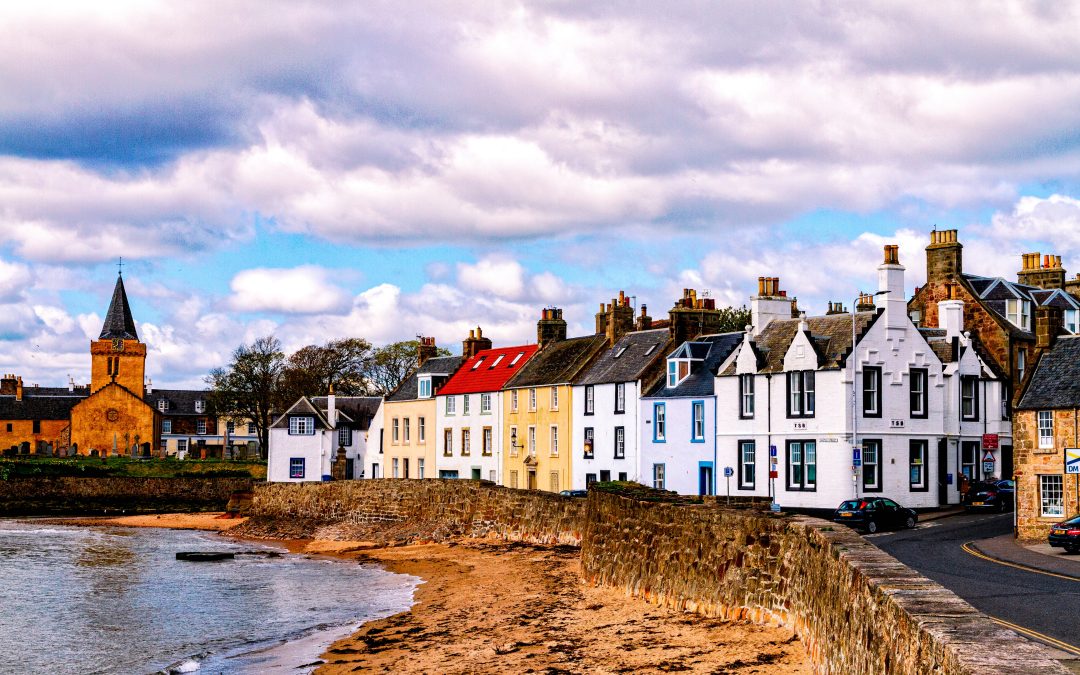Planning a Trip to Scotland: Essential Tips and Must-See Attractions
Planning a trip to Scotland can be an exciting endeavour with its picturesque landscapes, rich history, and unique culture. From fairy-tale castles to charming small towns, Scotland offers a wide range of experiences for travellers looking to create unforgettable memories. To make the most of this trip, it is essential to carefully plan the journey in advance, considering aspects such as the best time to visit, transportation, accommodations, and must-see attractions.
A well-planned Scottish adventure should begin with understanding the country’s diverse regions and deciding which areas are of most interest. For example, travellers might opt to explore the bustling cities of Glasgow and Edinburgh, embark on an island-hopping adventure in the Hebrides, or immerse themselves in the majestic beauty of the Scottish Highlands. By creating a personalised itinerary, visitors can ensure they get the most out of their time in Scotland.
When considering the logistics of travelling around Scotland, it’s important to explore the various options available. From public transport such as trains and buses, to guided bus tours or even renting a car for maximum flexibility, there’s a transportation method to suit every traveller’s needs. Knowing the ins and outs of getting around the country efficiently will ensure a stress-free and memorable Scottish vacation.

Planning a Trip to Scotland
Best Time to Visit
When planning a trip to Scotland, considering the best time to visit is essential. Scotland has a varied climate, with generally milder weather during summer (June to August) and colder temperatures in winter (December to February). Each season offers unique experiences: summer provides long days and warmer weather ideal for exploration, while winter lends itself to snow sports in the highlands. The changing seasons also bring opportunities for visiting during different festivals such as the Edinburgh Fringe Festival in August or Hogmanay (New Year’s Eve) celebrations in December.
Visa and Travel Requirements
Before making any travel arrangements, it’s essential to check visa and travel requirements for your journey to Scotland. As a part of the United Kingdom, Scotland’s entry requirements depend on your nationality, reason for the visit, and duration of stay. Most visitors from non-EU countries will require a Standard Visitor Visa. Make sure to consult your nearest British Embassy, High Commission or Consulate for the latest and most accurate information regarding visa requirements.
Budget and Prices
To plan the perfect trip to Scotland, allocating a reasonable budget and understanding price levels is crucial. Keep in mind that Scotland can be quite affordable compared to other European destinations, but prices may vary depending on the time and location of your visit.
Here are some rough estimates:
- Accommodation: £30-£100 per night for budget to mid-range hotels
- Transportation:
- Local bus fare: around £1.60 per journey
- Train travel between cities: varies, but £30-£60 is typical for one-way trips
- Food and drink:
- Meals at budget-friendly restaurants: £10-£20 per person
- A pint of beer: £3-£5
- A cup of coffee: £2-£3
Scotland offers a variety of attractions and activities to suit everyone’s interests and budgets. Don’t forget to factor in possible entrance fees for historical sites, nature reserves, and museums as well. Book accommodations in advance, especially during peak seasons, to secure the best prices and availability.
By considering the best time to visit, checking visa and travel requirements, and setting a reasonable budget, you can plan an incredible Scotland trip to create unforgettable memories.
Planning a trip to Scotland: what to see
Scotland is a beautiful country full of rich history, stunning landscapes, and exciting activities. In this section, we will explore some of the highlights in various aspects of Scottish travel, including cities and tourist attractions, adventures in the highlands and islands, and scenic drives and road trips.
Cities and Tourist Attractions
Scotland boasts incredible cities, each with their own unique charm. The capital, Edinburgh, offers a mix of medieval and modern architecture along with the iconic Edinburgh Castle. Another must-visit city is Glasgow, known for its vibrant arts and cultural scene.
Apart from the cities, some other noteworthy tourist attractions include the historical city of Stirling, home to the magnificent Stirling Castle, the mystical Loch Ness, and the lovely town of St. Andrews, famous for its golf courses and ancient university.
Adventures in the Highlands and Islands
The Scottish Highlands offer a plethora of adventurous activities, such as hiking up Ben Nevis, the highest mountain in the UK. You may also explore the stunning landscapes of the Isle of Skye, or embark on a ferry tour across the Hebrides, home to beautiful white-sand beaches.
Nature lovers will find plenty of opportunities for hiking, wildlife watching, and admiring the rich landscape of the region. Additionally, Balmoral Castle, Eilean Donan Castle, and Inverness are some popular spots for those who appreciate history and architecture.
Scenic Drives and Road Trips
Scotland offers numerous breathtaking scenic drives and road trips that allow you to witness the magnificent countryside and dramatic coastlines. A highly recommended route is the North Coast 500, which covers an amazing 500-mile journey through the northern part of the country, including the North Highlands and several charming villages.
Another fantastic option is the trip from Glasgow to the coastal town of Oban, which offers fantastic views of lochs, mountains, and forests. Exploring the Scottish Islands, such as Mull and Arran, is another great way to experience the beauty of Scotland’s diverse landscapes and scenery.
When planning your trip, consider factors such as your itinerary, whether you’ll be travelling by car or public transport, and the best time to visit Scotland to make the most out of your experience.
Accommodation and Dining Recommendations
Where to Stay
When planning a trip to Scotland, finding the perfect place to rest your head after a day of exploring is essential. In the breathtaking Scottish Highlands, consider staying in Inverness, the region’s capital, which offers a range of accommodations. For those who wish to explore the rugged beauty of Glencoe, consider a cosy bed and breakfast or a traditional inn to feel truly immersed in the Scottish landscapes.
On the Isle of Skye, you can find various options from charming guest houses to luxurious hotels. For a unique experience, try a stay in a historic castle or a tranquil lodge overlooking the stunning lochs and landscapes.
For island-hopping adventures, the beautiful Islands of Iona offer a selection of welcoming retreats, which provide an authentic taste of Scotland.
Food and Drinks
While visiting Scotland, be sure to indulge in the local cuisine, which is rich in history and flavour. As you journey through the Scottish Highlands, you’ll find cosy pubs that serve traditional favourites like haggis, neeps, and tatties. Don’t hesitate to sample some locally produced whisky to warm you up on a cool evening.
The Isle of Skye is known for its delicious seafood dishes, ranging from fresh oysters to mouthwatering langoustines. Alongside seafood, you’ll find an array of traditional Scottish fare in cosy pubs and stylish eateries. As you explore this magnificent island, take the chance to sample Skye’s award-winning craft ales and spirits, which truly capture the essence of the area.
On the Islands of Iona, you’ll find a variety of dining options that cater to different tastes and budgets. From charming cafes serving homemade cakes and pastries, to atmospheric pubs dishing up hearty meals accompanied by local beers, you’ll find something to satisfy your appetite.
Regardless of where you choose to stay and dine in Scotland, the warm hospitality and immersive experience will make your trip truly unforgettable.
Transportation Options
Getting Around by Car
Hiring a car is a popular option for travellers looking to explore Scotland at their own pace. With a car, you can reach remote locations and experience the beautiful countryside. It’s essential to book ahead, especially during peak tourist seasons. Remember, in Scotland, driving is on the left side of the road, and petrol stations may be sparse in rural areas. Be prepared for narrow, winding country lanes, and always adhere to the speed limits and traffic regulations.
Public Transport
Scotland boasts a well-connected public transport network, including trains, buses, and ferries. Travel in Scotland is made convenient by these modes of transportation, providing accessibility to towns, cities, and even remote villages. Trains offer a particularly scenic way to explore the country, while buses are the most cost-effective choice for shorter journeys. Timetables can be found online, and it is advisable to plan your routes ahead of time.
Trains:
- Operated by ScotRail
- Connects major cities and towns
- Offers scenic routes, e.g., West Highland Line
Buses:
- Citylink, Megabus, and local operators
- Covers cities, towns, and villages
- Cost-effective for short distances
Ferries:
- Caledonian MacBrayne (CalMac) and NorthLink Ferries
- Connects mainland with islands
- Offers unique views of the coastline
Passes
For those using public transport, various passes are available to make your travel in Scotland easier and more cost-effective. These passes offer unlimited travel on buses, trains, and ferries within specific timeframes or regions. Some options include:
- ScotRail Spirit of Scotland Pass: Unlimited train travel in Scotland within 8 or 15 days
- Scottish Citylink Explorer Pass: Unlimited bus travel within a chosen area for 3, 5, or 8 days
- CalMac Hopscotch Tickets: Flexible island-hopping tickets for CalMac ferry routes
These passes can help you get around Scotland more affordably and conveniently, considering the various modes of transportation available. Remember to book and research the passes that best suit your travel itinerary.
Experiencing Scottish Culture
Scotland, with its rich history, natural beauty, and vibrant culture offers a plethora of experiences for travellers. This guide focuses on delving into the Scottish culture, exploring its arts, music, festivals, and events.
Arts and Music
Vibrant arts and music scenes are essential components of Scottish life. The country is home to numerous museums and galleries, such as the National Museum of Scotland, showcasing centuries of Scottish history and artefacts. For a unique cultural experience, visitors can explore ancient Scottish castles that bear witness to the nation’s rich past.
Scottish music is an integral part of its cultural identity, ranging from traditional bagpipe tunes to contemporary acts. The beautiful landscapes of the Scottish Highlands and islands have inspired musicians and artists alike, creating a diverse and captivating atmosphere for visitors.
Festivals and Events
Scotland hosts a variety of festivals and events throughout the year, celebrating the country’s unique identity. One of the most popular festivals is the Edinburgh Festival, held in August, which showcases the best in art, music, theatre, and dance. Another key event is Hogmanay, the nation’s beloved New Year’s Eve celebration, where locals and visitors alike come together to usher in the new year accompanied by traditional music, fireworks, and street parties.
Visitors looking to experience Scotland’s natural beauty can embark on various suggested itineraries, exploring the breathtaking valleys and wildlife in the Scottish Highlands, Glen Coe, and Cairngorms National Park. For a true immersion in the local culture, consider joining one of the many guided trip planning services, which can help arrange tailored itineraries to suit your interests, whether it be history buffs, golf enthusiasts, or even those with a penchant for whisky and distilleries.
In conclusion, Scotland offers a wealth of opportunities to experience its enchanting culture, arts, and events. From majestic castles to lively festivals and breathtaking landscapes, there is something for everyone in this diverse and captivating country. So, take the time to explore Scotland and uncover the many cultural gems that await you.
Essential Tips for Visiting Scotland
When planning a trip to Scotland, it’s important to keep a few essential tips in mind to make the most of your journey. First and foremost, remember to pack for all kinds of weather. Scotland is known for its unpredictable weather conditions, so bringing a raincoat is essential. Layered clothing will also help you adapt to any sudden changes in temperature.
As you venture into the incredible landscape of the Scottish Highlands, it’s crucial to respect the environment. Scotland’s outdoors allows for a great deal of freedom, so ensure you follow the Leave No Trace principles. This will help protect the stunning natural beauty of the region.
Exploring the historic castles dotted around Scotland can be enriching and rewarding. To make the most of these visits, allocate enough time to delve into their storied past and appreciate their remarkable architecture. Some of these castles, like Edinburgh Castle and Stirling Castle, are not to be missed.
For an unforgettable experience, try island hopping around Scotland’s many islands. With over 800 islands to choose from, each island offers unique adventures. Whether it’s exploring the wildlife of Orkney, enjoying the scenic beauty of the Isle of Skye, or immersing yourself in the landscapes of the Outer Hebrides, island hopping can add a memorable twist to your Scottish adventure.
Another must-see attraction in Scotland is the Falkirk Wheel, a marvel of modern engineering. Connecting two major canals in the country, it’s the world’s only rotating boat lift, offering an impressive sight as it lifts boats 35 metres from one canal to the other.
Finally, knowing the best time to visit Scotland is key in determining your itinerary. While summer months tend to have extended hours of daylight and more favourable weather, autumn offers dramatic landscapes and fewer crowds. Whichever season you choose, you’re sure to find Scotland’s beauty and charm captivating.
Frequently Asked Questions About Planning a Trip to Scotland
Best time to visit?
The best time to visit Scotland depends on what you’re looking for during your trip. Each season offers something different. For instance, spring is a great time to see colourful flowers and wildlife, while autumn is perfect for witnessing the beautiful autumn colours. Christmas markets and winter festivities are popular in the colder months. You can learn more about Scotland’s seasons to help you decide the best time for your visit.
Average trip cost?
The average cost of a trip to Scotland will vary depending on factors such as your choice of accommodation, transportation, and activities. Budget travellers can expect to spend approximately £50 to £100 per day, while those looking for a more luxurious experience may spend upwards of £200 per day. Of course, your personal spending habits and preferences will influence the overall cost of your trip.
Ideal month for flights?
The ideal month to book flights to Scotland depends on factors like your departure location, flight prices, and personal preferences. Generally, the most affordable months to fly are during the shoulder seasons, such as May and September. These months also offer a good balance between weather and crowd levels. Keep in mind that prices and availability may vary, so it’s a good idea to book your flights in advance and monitor price trends.
Is it expensive?
Scotland can be an expensive destination, but its costs are comparable to other European countries. However, it is possible to visit Scotland on a budget by staying in budget accommodations, using public transportation, and eating at affordable restaurants. Planning ahead, being flexible, and looking for deals can help you save money during your trip.
Popular attractions?
Scotland is home to many popular attractions, such as historical sites, lush landscapes, and vibrant cities. Some must-see attractions include Edinburgh Castle, the Isle of Skye, Loch Ness, and the Scottish Highlands. The cities of Glasgow and Inverness also offer a great mix of history, culture, and entertainment. Choose your attractions based on your interests to make your trip more meaningful and enjoyable.
Package recommendations?
There are numerous package options for visiting Scotland, including guided tours, self-drive itineraries, and specialised tours for activities like hiking, whisky tasting, or golf. When choosing a package, consider factors like the length of your trip, your interests, and your budget.

